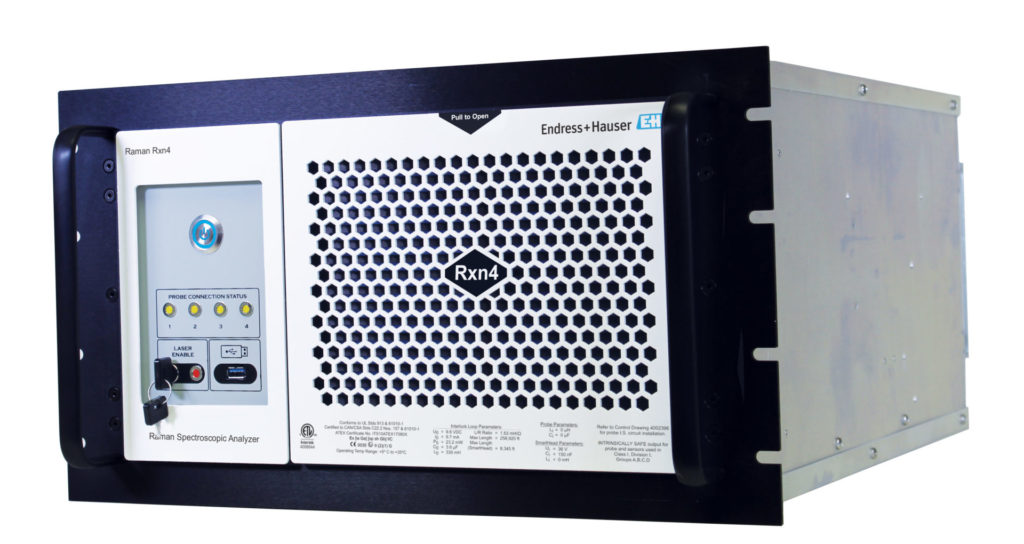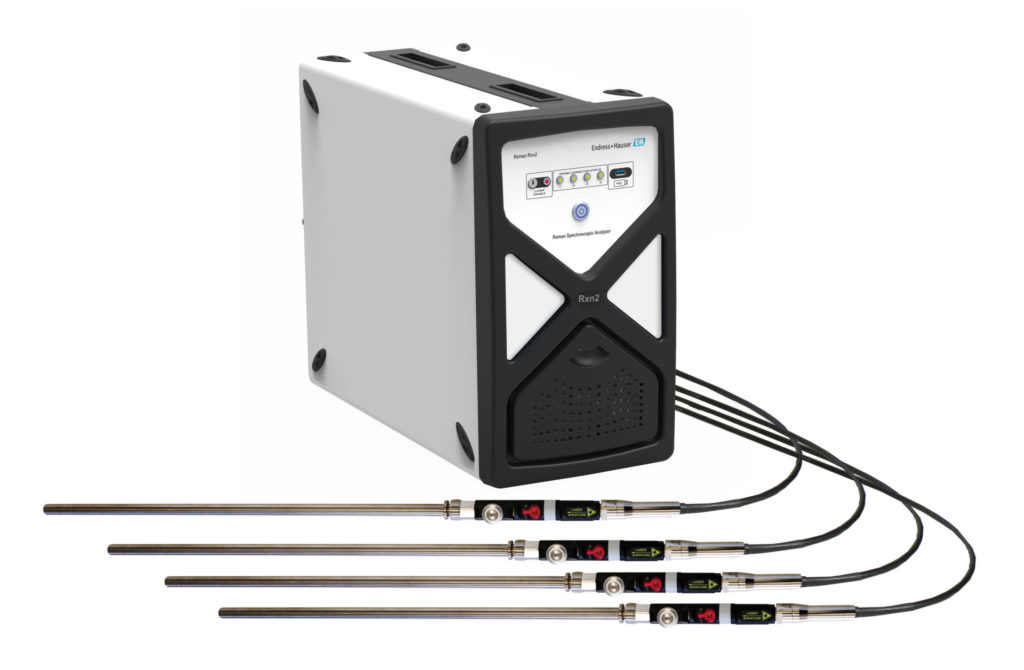Achieve precision and reliability with Endress+Hauser’s iTEMP temperature transmitters
Temperature measurement is a decisive factor in many industrial processes. Across all industries, accurate, fast and reliable measurement of process […]
Raman spectroscopy is not a new measurement technique, but what has changed lately is greater automation and inline technology. Recently, there has been a new focus on data analytics, driving the emergence of new Raman applications including high throughput and automated modeling, single-use, perfusion, cell and gene therapies, downstream, and more. In just the last few years, advances in Raman analyzer and probe technology have enabled greater data integrity, smarter processes, and less manual intervention.
Raman spectroscopy is a non-destructive technique for measuring the chemical composition of a sample by excitation using visible or near-infrared laser light. As this light interacts with molecular vibrations in the sample, it becomes inelastically scattered. When the energies of the resulting scattering are plotted as a spectrum, subtle changes in light wavelengths can be observed specific to each molecular vibration. Most incident scattered light shares the wavelength of the laser source, but the small percentage that differs is used to identify the sample’s chemistry.
Raman spectroscopy therefore generates a “molecular fingerprint” used to identify, quantify, and monitor the molecular makeup of the sample.
Raman spectroscopical analysis provides information about a sample’s:
Originally developed and practiced in academic laboratory settings in the 1920s, advances in the technology over time—along with more user-friendly interfaces and improved instrumentation—have made it ideal for identifying substances in industrial applications since the 1990s. Today, Raman spectroscopy is used in laboratory, portable, industrial, environmental, and clinical research settings to identify application-specific molecules.
The growth of Raman spectroscopy in the biopharmaceutical industry has accelerated notably over the last two decades. Raman aligns with key process analytical technology (PAT) and Quality by Design industry initiatives, and feasibility studies have transitioned into practical use cases.
The results are proving Raman as a reliable measurement technology for monitoring process media during upstream bioprocessing, such as in cell culture and fermentation processes.
Bioprocesses are highly complex and expensive, requiring a long time to build process knowledge and optimize productivity. Traditional offline manual sampling does not allow for tight monitoring and control of critical quality parameters, often resulting in inconsistent product quality. Because of these challenges, it is difficult to ensure product quality for short-run clinical batches, while complying with Good Manufacturing Practice requirements.
Raman spectroscopy offers distinct advantages over traditional offline techniques because it acquires data quickly and continuously, reduces process contamination risk, and requires little or no sample preparation. A single Raman analyzer with multiple probes can provide inline and real-time bioprocess monitoring, control, and optimization of multiple process streams. In upstream development, for example, Raman accurately performs inline and simultaneous measurement of nutrients, metabolites, and cell viability.


Many organizations are exploring a move away from batch in favor of continuous manufacturing. In the past, a lack of inline process measurement techniques made continuous manufacturing impossible for Bioprocesses, but industrial Raman instrumentation provides the reliable inline measurements needed to develop feedback and feedforward control strategies for continuous bioprocessing.
And while downstream biopharma processes have been slower to adopt Raman than their upstream counterparts, they are now using it to identify protein characteristics, such as concentration, structure, crystallization, aggregation, and others.
Raman technology is helping biopharmaceutical manufacturers improve product quality, speed up cycle times, increase yields, comply with regulatory standards, and facilitate cross-scale method transfer from lab to manufacturing. And the addition of Industry 4.0 principles in Raman PAT, facilitated by Endress+Hauser instrumentation, are further increasing the rate of Raman integration into a wide range of process control applications.
Temperature measurement is a decisive factor in many industrial processes. Across all industries, accurate, fast and reliable measurement of process […]
The measurement of TOC (total organic carbon) in water is of vital importance to a multitude of industries that need […]
Discover the top 10 most viewed blogs of 2022 covering challenges and solutions across all industries May 9, 2023 – […]